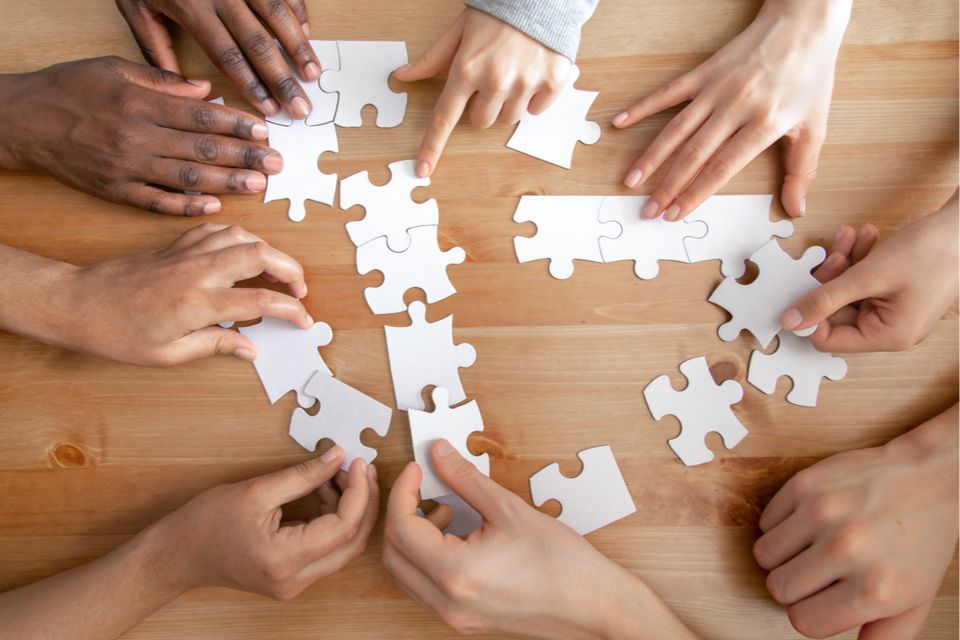I recently walked down the street and saw a familiar neighborhood kid and her dog rapidly turn and jog away from me. What a strange response, I thought. Yet, I’ve realized it’s becoming a pattern. People seem to give each other the evil eye at the grocery store as they reach for food on the same shelf. I’ve noticed a complete lack of eye contact at the gym as people walked in wide circles around each other.
It seems lately that most people are putting not just 6 feet but 60 feet between themselves and others. When others approach, they navigate away, often without words and without eye contact. This new normal of not just social distancing but rather social isolation feels uncomfortable. The problem is, humans aren’t built for isolation.
What can we do to rebuild relationships when social distancing has become social isolation? Here are five tips to re-initiate connection, even while social distancing.
The 5-Foot Rule
I worked for a company that taught us to make eye contact and say hello to everyone within 5 feet. Given the 6-foot social distancing guidelines, the 5-foot rule no longer makes sense. We can start rebuilding human connections by expanding our own radius. Instead of 5 feet, make it 15! Make eye contact and say hello to everyone in your 15-foot radius instead of 5. See what happens next.
Call People by Their Names
Back in the 90s, I was in a team-building workshop. I still remember the speaker asking us what the most important word in the English language was. The answer was, “your name.” After we all took a moment to reflect on that, we all agreed. Subtle smiles and a sense of lightness radiated in the room as we practiced calling each other by our names.
Getting started in your community is easy. The cashier or person who delivers your groceries probably wears a nametag. Thank this person by name. If you go to the gym, the employees likely have nametags. Greet them by name. If you seem to be regularly sharing the same workout time as someone else, take a moment to introduce yourself by name and ask for their name in return. This could sound like, “Hey, I noticed both of us are here at the same time each week. I’m Meredith. What’s your name?”
Make Virtual Personal
Tired of virtual meetings? “Zoom fatigue” is showing up as a social and work problem more and more in new business research. One of the contributing factors is the transactional nature of these events. The human element beyond a transaction has been forgotten. Instead of logging into your next call, following up on your tasks, and then repeating the process, change the process on an individual level.
For example, when I attend a virtual meeting or conference, I watch for someone to make a comment or ask a question that really resonates with me. After the call, I follow up with that person through a social media message, e-mail, or phone.
Here’s a sample of a recent follow-up I initiated: “Kelly, thank you for sharing your background in bodybuilding in the virtual conference session today. This was my first time at this conference, and your tips on nutrient timing really resonated with me. I’ve been competing for the past decade, too. I’d love to chat more about both of our experiences in competing during the pandemic. It would be nice to have a human conversation with a like-minded person. Would you be open to further chatting?”

Re-Engage Family and Friends
Many family and friend relationships have been strained by distance or differing views regarding pandemic management. Re-engaging family and friends can be difficult, especially when (strong) opinions differ.
Take the first step. Call a family member or friend you haven’t seen in a while. If the first comment they make is surrounding their pandemic views, listen fully, then let the other person know you respect their views (without the need to interject your own). Then, state the purpose of your call. This might sound like, “I really miss our time in person together, so I thought maybe we could chat on the phone. How are you doing?”
Check Your Body Language
With masks still prevailing in many communities, body language speaks louder than ever before. When you see people, are you demonstrating open body language? Are your arms and legs uncrossed? Are your palms and heart facing toward those you are interacting with? If wearing a mask, are your eyes and eyebrows relaxed, or do they match the attitude you wish to portray? Your body language can either foster or hinder further connection. So pay attention to those non-verbal cues.
About the Author: Dr. Meredith Butulis, creator of the ISSA Fitness Comeback Coach Certification (online), is a Sports Medicine Physical Therapist, NSCA Certified Strength and Conditioning Coach, ACSM Certified Exercise Physiologist, NASM Certified Personal Trainer, and Precision Nutrition Certified Nutrition Coach in practice since 2002. She consistently walks the talk as a fitness, physique, and OCR world level competitor and lifestyle transformer since 2006, celebrating many wins along the way. Want more total fitness lifestyle inspiration and interaction? Follow Dr. Meredith on Instagram @Dr.MeredithButulis or join the free “Fitness Focus Fuel” Facebook Group.









